As readers of my four-part review of will recall, I felt there were many things to like about Lomography’s Belair X 6-12 camera, but image quality wasn’t one of them. A good deal of the camera’s potential was limited by the two included lenses. So when Lomography announced that new lenses with glass (!) optics would soon be available, I put in my order right away. Five months later my 90mm Belairgon lens finally arrived. As soon as I had it unpacked, I loaded a roll of film into the camera and went shooting. Here’s what I found.
First, for those of you wondering what the Belair is, I’d encourage you to read my initial review, otherwise, little of what follows will make much sense. Second, I want to emphasize that I am not a practitioner of the blurry/cross-processed/double-exposed aesthetic that many users of Lomography gear enjoy, and for which the stock Belair lenses are well suited. Nothing against that style of photography — it’s just not my thing. My evaluation of the 90mm Belairgon is biased towards how well it lets me shoot the kinds of things I like to shoot. Your priorities may be different.
Compared with the all-plastic lenses that the Belair is shipped with, the the fit and finish of the Belairgon 90mm makes it seem like it came from another planet. And it did. A planet called Russia. Manufactured by Zenit, the new lens is a hefty, all-metal unit with fully coated glass elements. Indeed, the lens is so well made that in some respects it seems an odd match for the mostly plastic camera.
 The Belairgon 90mm tips the scales at a hefty 343 grams (12 ounces). When you consider that the camera itself weighs only 100 grams more, you can probably appreciate how the pairing feels a little unusual in the hand. Indeed, the best way to support the camera is to hold it by the lens board. The extra lens weight also means the camera’s folding bellows mechanism tends to pop open any time the camera is aimed down. And when you attach the Belairgon, you have to do so carefully as the lens’s metal flange can easily damage the camera’s plastic socket. Make sure you line up those index marks, and don’t force anything!
The Belairgon 90mm tips the scales at a hefty 343 grams (12 ounces). When you consider that the camera itself weighs only 100 grams more, you can probably appreciate how the pairing feels a little unusual in the hand. Indeed, the best way to support the camera is to hold it by the lens board. The extra lens weight also means the camera’s folding bellows mechanism tends to pop open any time the camera is aimed down. And when you attach the Belairgon, you have to do so carefully as the lens’s metal flange can easily damage the camera’s plastic socket. Make sure you line up those index marks, and don’t force anything!
The aperture switch on the Belairgon has nice, positive click stops at f/8 and f/16. Like the original Belair lenses, these are your only aperture choices — a limitation imposed by the camera’s simple shutter mechanism. One interesting aspect of the new lens is that you can move the aperture ring slightly beyond f/16, which produces a smaller, “cat’s eye” opening that might be close to f/22, which could prove useful in some situations.
The lens’s focusing mechanism is smooth and sure with only a tiny amount of play when you change focusing direction. Typical of most Russian equipment I’ve handled over the years, the focus on the Belairgon feels very slightly gritty, rather than silky smooth the way Japanese lenses from Nikon or Canon tend to. Distances are marked on the barrel in red and white, and are all metric. The red numbers indicate key zone-focus distances, but regrettably, there is no depth-of-field scale on the lens barrel — something that would be very handy on a guestimation-focus camera such as this. Still, given that the maximum aperture is f/8, this isn’t a serious limitation in most situations. Besides, you can always pick up an inexpensive auxiliary range finder if you want to be more accurate.
One of the best things about the design of the Belairgon is that it’s threaded for 52mm filters. Hooray! This is a bigger deal than it might at first seem. Obviously, people like me who shoot a lot of black-and-white will be gladdened to know that we can use colour filters the way we’re accustomed to. But more than that, filters provide a means of overcoming the limitations of the Belair’s 1/125-second top shutter speed. Slap on a 2-stop, neutral-density filter and you’re free to shoot ISO 400 film in bright sunlight, while retaining the ability to take pictures in dim conditions. This feature alone almost makes the lens worth having.
Of course, the real measure of the Belairgon’s worth is the quality of the images it delivers. Lomography promises “awe-inspiring sharpness,” but considering they touted the stock plastic lenses as having “never-before-seen sharpness,” it would seem that they have slightly different standards for sharpness than I do. So, in the spirit of a pictures (or, five in this case) being worth 1,000 words, let’s have a look at some test shots.
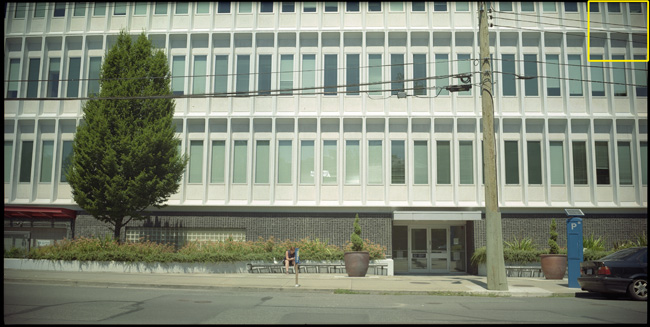 The scene above was not chosen for its aesthetic virtues, but rather, because it has lots of detail that will show up the lenses shortcomings. All test shots were done hand-held (with the camera working at its maximum shutter speed) while a neutral density filter was used for the f/8 shots to ensure correct exposure. The area highlighted in the yellow box in the upper-right corner is the part of the picture appearing in the full-res test samples below. Using the far corner of the widest possible picture format (6×12) is a “worst case” test for the lens. In other words, you can expect better sharpness over the rest of the photograph.
The scene above was not chosen for its aesthetic virtues, but rather, because it has lots of detail that will show up the lenses shortcomings. All test shots were done hand-held (with the camera working at its maximum shutter speed) while a neutral density filter was used for the f/8 shots to ensure correct exposure. The area highlighted in the yellow box in the upper-right corner is the part of the picture appearing in the full-res test samples below. Using the far corner of the widest possible picture format (6×12) is a “worst case” test for the lens. In other words, you can expect better sharpness over the rest of the photograph.
First, let’s compares the performance of the original Belair plastic lens with the new Belairgon at f/16:
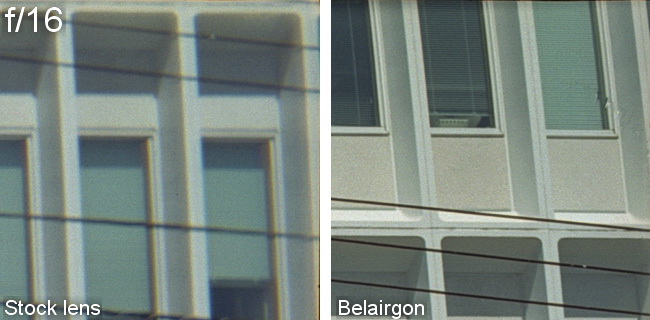 As you can see, the performance of the Belairgon is significantly better than the original 90mm plastic lens. Quite apart from how it stacks up against the plastic lens, I’d say the results with the Belairgon are excellent.
As you can see, the performance of the Belairgon is significantly better than the original 90mm plastic lens. Quite apart from how it stacks up against the plastic lens, I’d say the results with the Belairgon are excellent.
Now let’s see what happens at f/8:
 There’s really not much to say about this. The plastic lens performs poorly at f/8 at the extreme edge of the field of view, as it did in the initial tests posted in my previous review. What is noteworthy is that the Belairgon essentially performs as well at f/8 as at f/16. Again, keep in mind, that we’re looking at the worst part of the imaging area here. If you prefer shooting with the 6×9 or 6×6 masks, you won’t even see this part of the image plane.
There’s really not much to say about this. The plastic lens performs poorly at f/8 at the extreme edge of the field of view, as it did in the initial tests posted in my previous review. What is noteworthy is that the Belairgon essentially performs as well at f/8 as at f/16. Again, keep in mind, that we’re looking at the worst part of the imaging area here. If you prefer shooting with the 6×9 or 6×6 masks, you won’t even see this part of the image plane.
The next set compares performance near the centre of the image:
 Both lenses performed well at f/16 (so I didn’t bother posting the results here), but at f/8 the Belairgon is noticeably sharper.
Both lenses performed well at f/16 (so I didn’t bother posting the results here), but at f/8 the Belairgon is noticeably sharper.
Overall, I’m very pleased with the performance of the 90mm Belairgon lens. It’s sharp from corner to corner and exhibits minimal chromatic aberration even when shooting with the 6×12 mask. I see noticeable vignetting and some barrel distortion, but those aren’t things that bother me greatly and they’re easy to correct in post-processing.
When I reached the end of my initial assessment of the Belair I was on the fence about whether or not to keep the camera — my decision hinged on the performance of the (then unavailable) Belairgon lens. I’m happy enough with the results I’ve gotten with this lens that I plan to keep the camera. I don’t have anything else in my arsenal that lets me take 6×12 panoramas, so the Belair is a worthwhile addition on that basis alone.
Is the Belair/Belairgon combination right for you? Obviously, you’re the only one who can make that assessment since so much depends on your priorities and the kinds of photography you like to do. But the addition of a Belairgon lens (they make a 114mm version in addition to the 90mm lens I purchased) significantly changes the portability of the camera and, perhaps more importantly, the economics of buying it. Currently the Belair and Belairgon together cost north of $400 (though discount coupons and bundling are common). This is the kind of outlay that opens up a lot of excellent alternatives if all you’re after is something that takes medium-format film. Where the Belair/Belairgon combination stands alone though is for those shooters looking for an auto-exposure camera that offers a variety of image formats. Off hand, I don’t know of a comparatively inexpensive camera that’s capable of producing 6×12s, let alone 6×9 and 6×6 shots as well.
Finally, while this new Belairgon lens does take care of what I felt was the most serious shortcoming of the Belair camera, all the other issues I noted in my initial review still exist. Most notably, the camera still lacks a cable-release socket, which seriously affects its utility. A cable-release retrofit would really allow the Belair to reach its full potential. Is that too much to wish for? Perhaps. But then again, there was a time when I thought quality glass lenses for the camera would remain the stuff of dreams. Here’s hoping the folks at Lomography are already working on it!
Did you find this article interesting or helpful? If so, consider using this link the next time you shop at Amazon.com. Better yet, bookmark it for future use. Thanks to Amazon’s associates program, doing so costs you nothing yet helps keep this site up and running. Thanks!
For more of my camera reviews, click here.


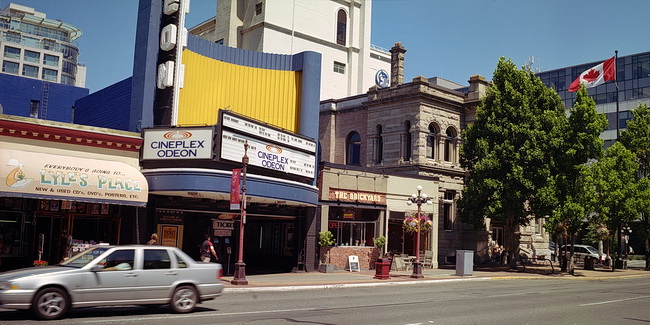
 Subscribe with RSS
Subscribe with RSS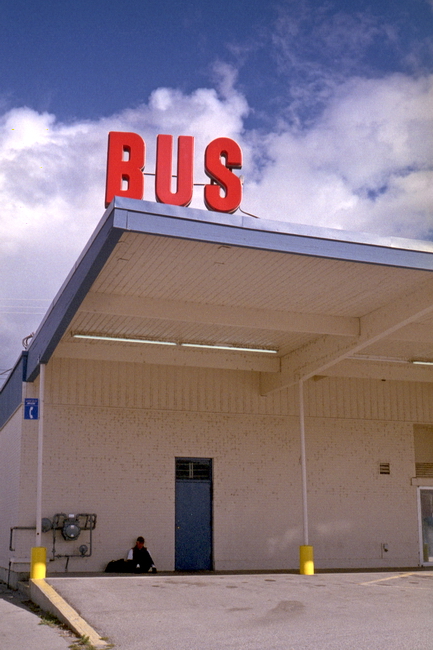
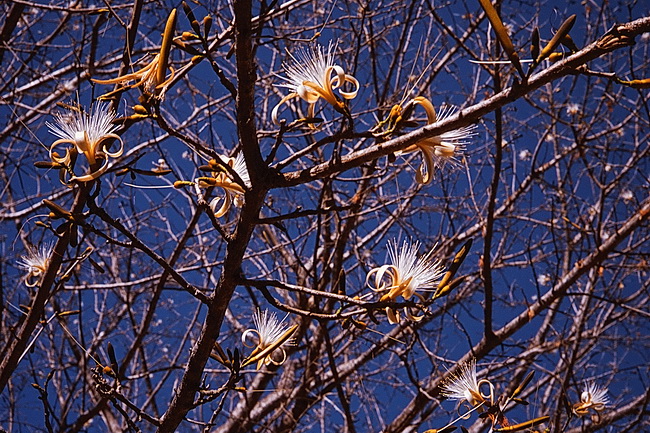
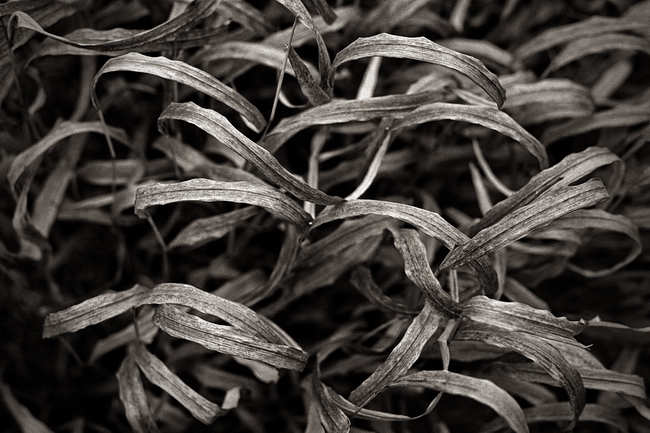
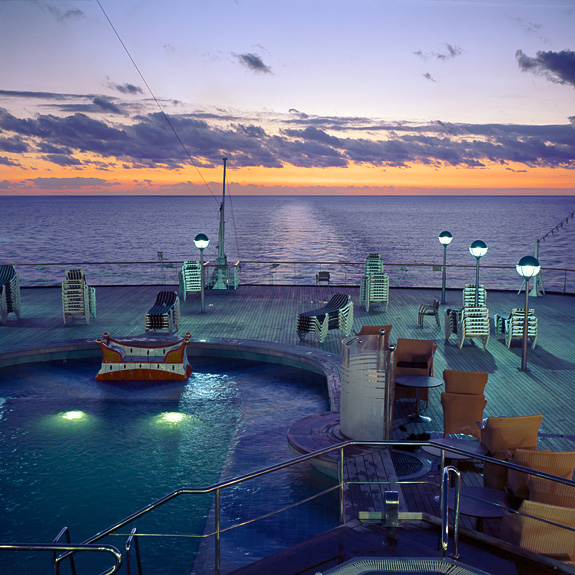

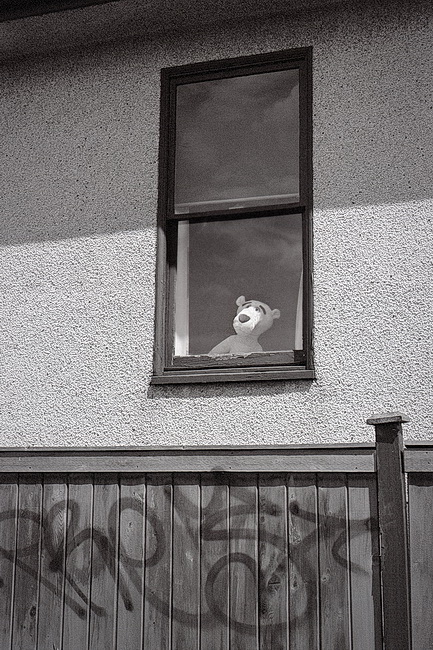
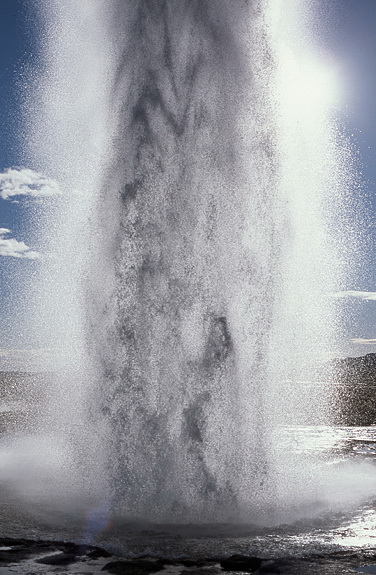
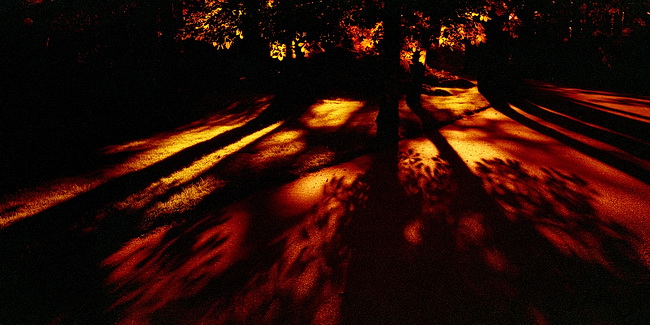
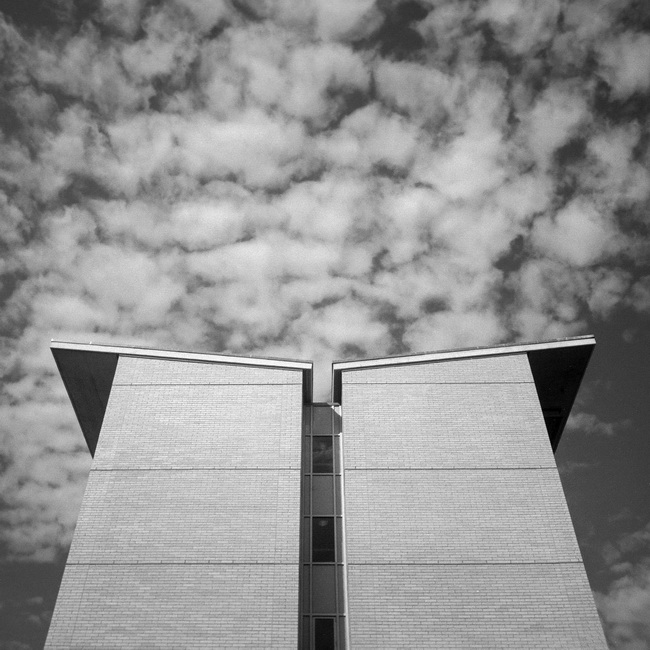

Nice review, I’ve been having a look at this combinations as I’m currently using a holga 120wcp. It’s a shame you can’t get the body and glass lens as a combo from the off.
Now that there is another camera, an Ondu 6×12 pinhole, that provides all three formats that u mention with the Belairgo, would u consider obtaining one of them and doing a review? The sample images look a bit soft to me.
Interestingly they even mention an Ondu 6×6 pocket pinhole camera!
Soft images are one of the “features” of a pinhole camera. If you’re after sharpness, generally it’s better to look elsewhere.